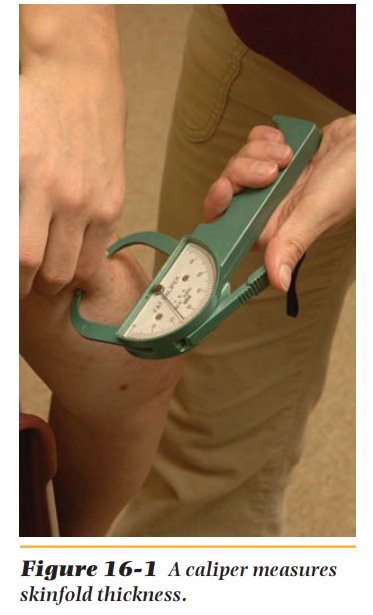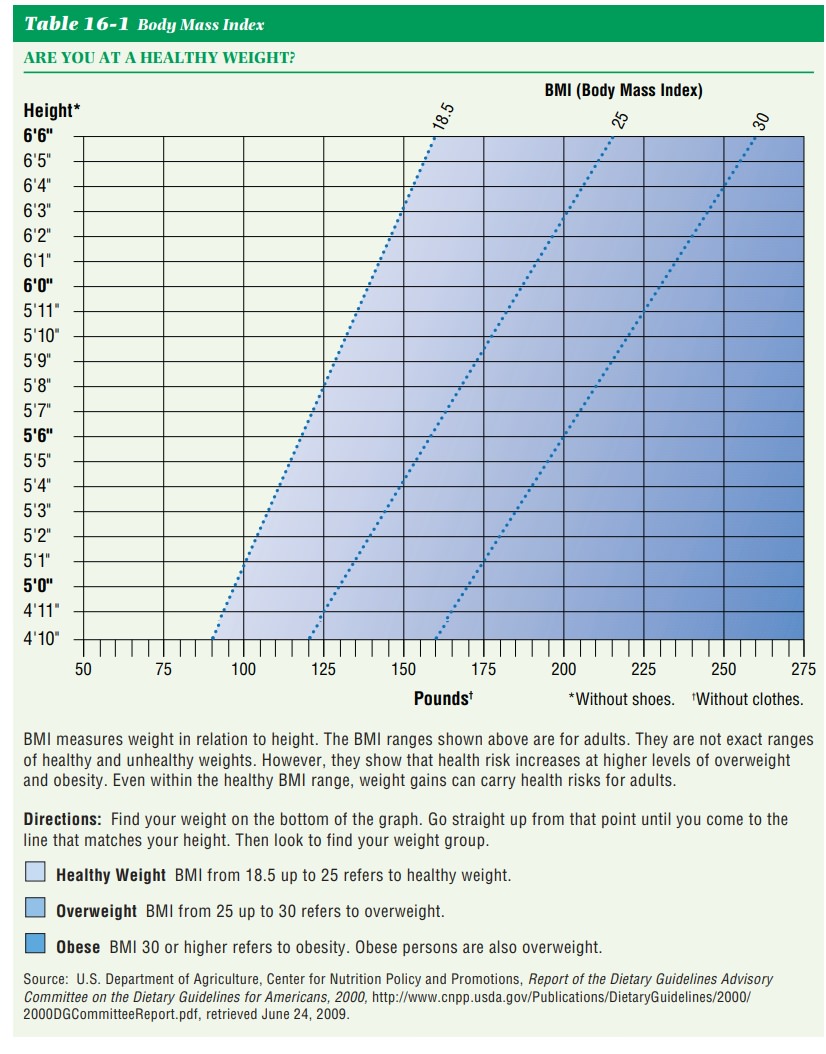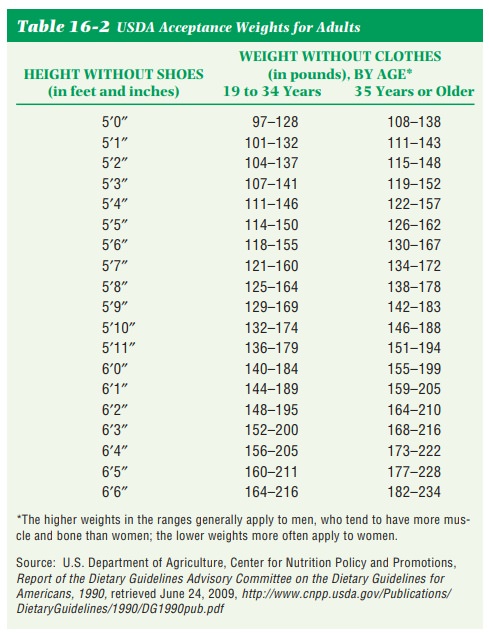Chapter: Nutrition and Diet Therapy: Diet and Weight Control
Diet and Weight Control
DIET AND WEIGHT CONTROL
One needs to understand
some commonly used terms before discussing weight control. The term normal weight can mean average, desired,
or standard. Normalweight is that which is
appropriate for the maintenance of good health for aparticular individual at a
particular time. The following is a simple method of determining one’s ideal
body weight. It is known as the “rule of thumb” method.
· Males assume 106
pounds for the first 5 feet (60 inches) and add 6 pounds for each inch over 60.
· Females assume 100
pounds for the first 5 feet (60 inches) and add 5 pounds for each inch over 60.
· Large-boned
individuals of both sexes increase
the first sum by 10%.
· Small-boned
individuals of both sexes decrease
the first sum by 10%.
This method is quick,
but one must remember that it is only an estimate.
Overweight can be defined as
weight 10% to 20% above average. Obesity can be defined as excessive body fat,
with weight 20% above average. Under-weight is weight 10% to 15%
below average.
The medical standard
used to define obesity is the body mass index (BMI). It is used to determine
whether a person is at health risk from excess weight. The BMI is obtained by
dividing weight in kilograms by height in meters squared. Fewer health risks
are associated with a BMI range of 19 to 25 than with BMI above or below that
range. A BMI between 25 and 30 indicates over-weight, whereas a BMI over 30
indicates obesity. Table 16-1 presents a range of BMIs using English units, so
one needn’t do the metric conversion.

The distribution of fat is another indicator
of possible health problems. Fat in the abdominal cavity (visceral fat) has been shown to be associated with a greater risk
for hypertension; coronary heart disease; type 2 diabetes; and certain types of
cancer than has fat in the thigh, buttocks, and hip area. A pear-shaped body
has a lower risk for disease than does the apple-shaped body. A waist-to-hip
ratio also can give an indication of risk. This is determined by dividing the
waist measurement by the hip measurement. A ratio greater than 1.0 in men and
0.8 in women indicates risk for the same diseases as given above. There also
appears to be an increased risk of metabolic complications for men
with a waist circumference of 40 inches and women with a waist circumference of
35 inches, according to the American Heart Association.
Body weight is
composed of fluids, organs, fat, muscle, and bones, so large variation exists
among people. In addition to height, one needs to consider age, physical
condition, heredity, gender, and general frame size (small, medium, or large)
in determining desired weight. For example, a 6-foot 2-inch man with a 44-inch
chest, 36-inch-long arms, and 812⁄-inch wrists will weigh more than
a 6-foot 2-inch man with a 40-inch chest, 35-inch-long arms, and 712⁄-inch
wrists because he has more body tissue. Table 16-2 gives lists of acceptable
weights according to age, sex, and height for adults that reflect realistic
weight goals.

Some people can weigh
more than is indicated on Table 16-2 and still be in good physical condition.
Professional football players, because of the amount of lean muscle mass they
develop, are examples. However, when they retire and reduce their physical
activity, that same muscle can change to fat. If their weights remain the same,
they then will be considered overfat because the proportion of fat will have
become too high. Some can weigh what Table 16-2 indicates they should weigh and
yet be overfat because too great a percentage of the weight is made up of fat.

Body fat is measured
with a caliper. Using a caliper correctly requires practice and skill. Because
the fat under the skin on the stomach and on the upper arm is representative of
the percentage of overall body fat, it is usually measured when knowledge of
the percentage of body fat is required. If it is more than 11⁄2
inches, one is considered overweight. If it is under 1⁄2 inch, one
is considered underweight (Figure 16-1).
A moderate amount of
fat is a necessary component of the body. It protects organs from injury and
acts as insulation. The final determination of desirable weight depends on
common sense.
Related Topics